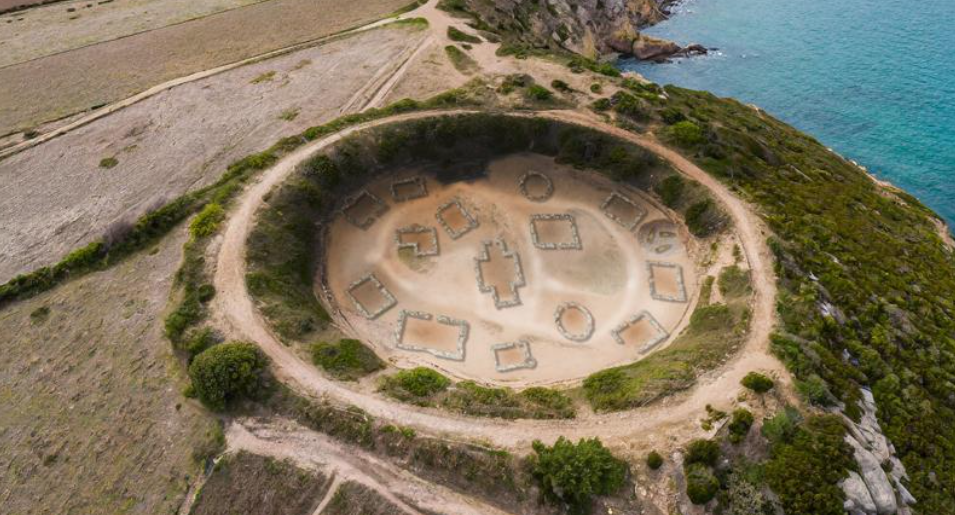A groundbreaking archaeological find in France’s Côtes d’Armor reveals a Gallic village dating back to the Iron Age.
Others are reading now
In a display of technological prowess intertwined with historical discovery, archaeologists have unearthed the ruins of an Iron Age Gallic village at Cap d’Erquy, Côtes d’Armor, France. This find, facilitated by cutting-edge satellite imaging technology, offers a unique window into the life of ancient Celtic communities.
A Glimpse into the Iron Age
The unearthed village comprises approximately twenty circular huts, strategically arranged around a central square, indicating a highly organized community structure.
Occupied from the 8th to the 5th centuries BC, this settlement provides invaluable insights into the Gallic way of life during the Iron Age.
The Gauls, known for their complex societal structures and as formidable opponents in the Gallic Wars against Julius Caesar, inhabited regions that span modern-day France, parts of western Germany, northern Italy, and Belgium. This discovery at Cap d’Erquy adds a significant chapter to our understanding of these ancient Celtic peoples, shedding light on their daily lives, architectural practices, and social organization.
Also read
Technological Breakthrough in Archaeology
The uncovering of this village was made possible by LiDAR (Light Detection and Ranging) technology, a revolutionary approach developed by the National Institute for Realistic Archaeological Research (INRAE). LiDAR employs laser scanning to create detailed three-dimensional reconstructions of the ground, revealing hidden structures without the need for traditional excavation methods.
Jean-Yves Peskebrel, an archaeologist at INRAE, points to the significance of this discovery, stating, “This is an exceptional discovery that gives us a better understanding of the daily life of the Gauls during the Iron Age. This technology paves the way for significant new discoveries and allows for the exploration of archaeological sites that were previously inaccessible.”
LiDAR technology has the potential to revolutionize the field of archaeology. By enabling researchers to detect and explore buried structures with unprecedented accuracy, it opens new avenues for understanding our past. The Cap d’Erquy village is a prime example of how modern technology can illuminate ancient civilizations, offering a clearer picture of human history.
As archaeologists continue to leverage LiDAR in their research, we can expect more revelations about our ancestors, bridging the gap between past and present.


